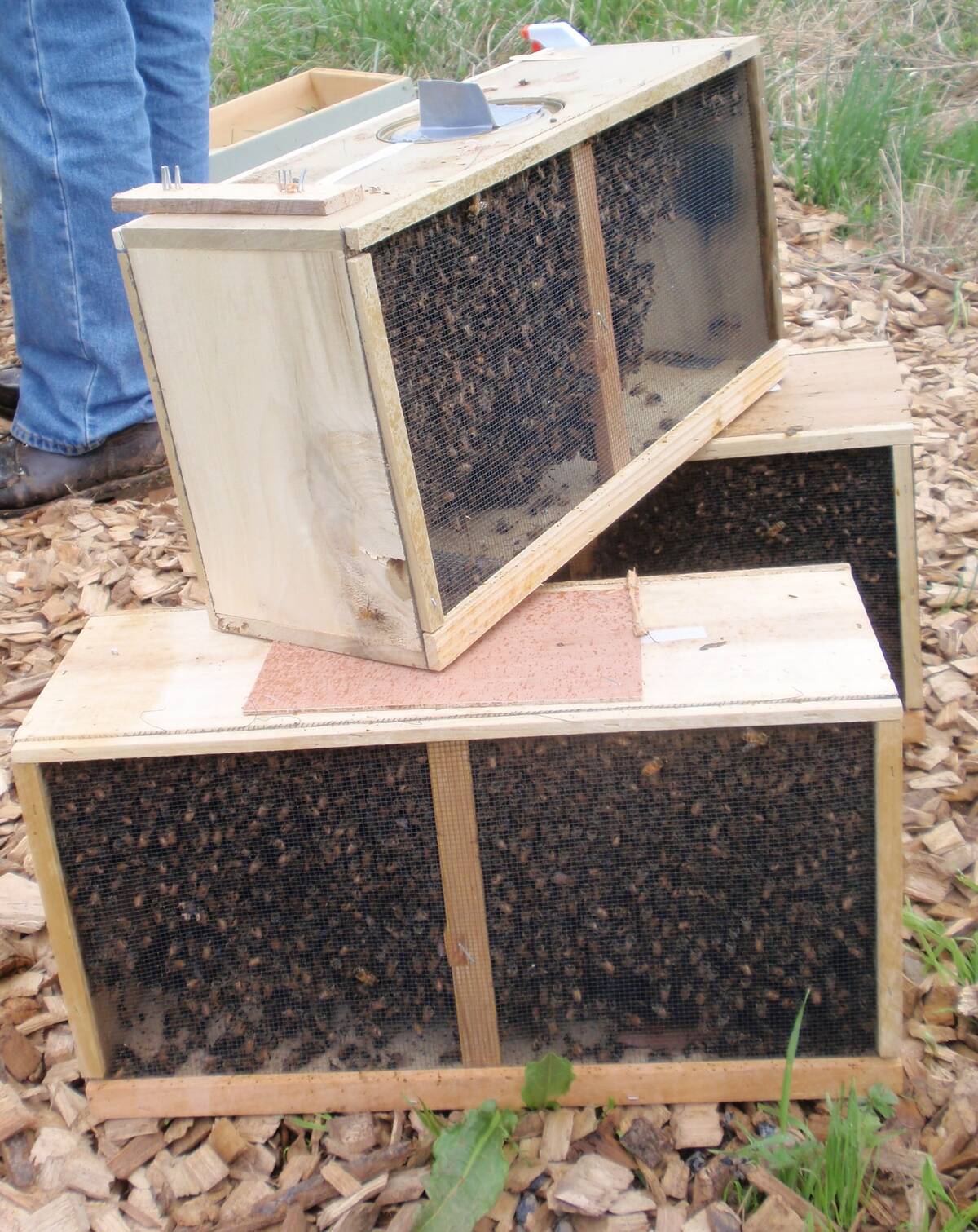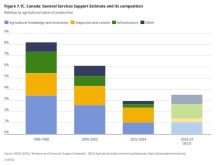Five years, eight task teams, 130 volunteers and 135 recommendations later, Canada’s seed industry is still waiting for meaningful regulatory change.
The Canadian Food Inspection Agency (CFIA) launched its Seed Regulatory Modernization process in September 2020, promising a once-in-a-lifetime transformation of rules that have governed how seed is produced and sold since the early 1900s.
The finish line is finally in sight, after a final policy paper was released this July with 52 proposals, but stakeholders are divided on whether the marathon was worth it.
Read Also

Canadian beekeepers call for regulatory accountability
Beekeepers say the Canadian Food Inspection Agency should restore packaged U.S. bee shipments, claiming the agency isn’t following evidence.
“After five years of work, what’s been put in front of us, given that we know we’re well behind … I can speak on behalf of our membership when I say that we are disappointed,” said Lauren Comin, director of policy at Seeds Canada, which represents seed companies and some farmer seed growers.
WHY IT MATTERS: The future of seed in Canada will depend on the regulatory framework the sector operates in. Modernizing that landscape has been a long slog, and key voices still disagree over the scope and impact of proposed changes.
The disappointment stems from what Comin sees as missed opportunities. Many of Seeds Canada’s members fall into what she calls the “do not object” category, meaning that they feel the proposed changes won’t significantly harm their business, but won’t significantly improve it either. Meanwhile, time and business have been marching on for the seed sector while the modernization process lingers, unfinished, in the background.
“By the time we complete the changes that are recommended, we’ll already be behind again,” Comin said.
Federal agencies responsible for agricultural regulation commonly attract complaints about their slow regulatory reform or re-evaluation processes. Farm groups and businesses have commonly argued that new products are slow to be approved, hitting at the sector’s global competitiveness and adaptability.
But Doug Miller, executive director of the Canadian Seed Growers’ Association (CSGA), which partners with the federal government to deliver seed crop certification, is more positive about what’s coming out of Canada’s seed modernization.
“From a grading perspective, CSGA is giving CFIA a passing grade here, for sure,” Miller said. “They’ve done a tremendous job, especially given that this is a new consultation framework.”
The co-development experiment
The CFIA argues that their experimental co-development approach gave more direct voice to stakeholders, but that it was also the reason that this process was different from other regulatory re-vamps, and lengthy. Rather than the agency developing proposals internally and asking for feedback, it brought together all parts of the seed value chain from the start: seed growers, seed companies, plant breeders, farmers, grain buyers and commodity groups.
“These task teams were stakeholder driven,” said Wendy Jahn, national manager of the CFIA’s seed section. “The stakeholder chairs decided, based on feedback from their members, what topics they were going to look at, what order and the chairs helped move that conversation along.”
The result is that most proposals now already have a level of consensus built in, having been developed by balanced stakeholder groups rather than from the top down.
“We don’t get the chance to do modernizations as often,” Jahn said. “To do it like this, holistically, is an opportunity that we really wanted to do a meaningful, thorough review.”
Of the 135 recommendations received, CFIA moved forward with 48 and added four of its own.
The remaining 83 weren’t rejected outright, the agency maintains. About a third affirmed the current system is already working well, while others fell outside the scope of seed regulations or were flagged for future consideration elsewhere.
Key seed sticking points
While many of the proposals have broad agreement, significant fault lines remain, particularly between CSGA and Seeds Canada. CSGA wants to be named the main administrator of Canada’s seed certification system, expanding its current authority and delivering services through what it calls a digital single window.
“This is something that we see in other mature seed systems around the globe, where government has delegated day-to-day authority of seed certification to a non-government entity like CSGA,” Miller said.
Miller further pointed to the association’s century of experience in that field and recent digital innovations that have cut certification decision times from weeks to hours.
Seeds Canada, however, has concerns about expanding any single organization’s role without proper oversight and competition.
“We are very concerned by a number of the proposals that recommend alternative service delivery through a single third party provider,” Comin said. “This is an opportunity for costs to increase for the sector and then for farmers.”
The CFIA’s proposal doesn’t explicitly name any organization as the main administrator. Instead, it identifies areas where alternative service delivery makes sense and leaves the door open to multiple providers.
Data collection debate
One of CSGA’s biggest concerns involves mandatory reporting of certified seed quantities. Currently, Canada doesn’t track how much certified seed is produced nationally, information Miller believes critical for informed decision making across the sector.
“As a country, we do not currently monitor the outputs of our system,” Miller said. “This is something that we wanted to be able to see addressed in this process.”
The CFIA has regulatory authority to collect this data, but hasn’t been using it.
One new proposal removes the requirement to use a specific CFIA form, allowing seed establishments to keep records in their own systems and make them available to inspectors on request.
“Changing it from a CFIA form to their own system also allows another entity to collect that information,” Jahn said. “So, if there is buy-in, if there’s support for a digital system, it can voluntarily run.”
But Seeds Canada opposes any mandatory reporting to a third party, and Comin said the form referenced in the proposal isn’t even currently in use.
Variety cancellation
Another issue is whether seed companies should be able to cancel variety registrations. Seeds Canada is of the view that registrants should control their own intellectual property.
“If a registrant wants to cancel and does not want to transfer, then that should be their choice without any other additional administrative burden,” Comin said.
But farmers and seed growers worry about losing access to varieties they rely on if they’re dependant on the whims of seed businesses.
Here, the CFIA proposal has tried to find a middle ground. The proposal on the table would allow cancellation, but also creates a transfer pathway so other qualified entities could maintain the variety if desired.
“We wanted to have an easier pathway, a more obvious way to facilitate having those varieties be transferred to other qualified individuals,” Jahn said.
Proposal pros
Beyond those kind of select disagreements, both CSGA and Seeds Canada said they see value in many of the proposals, particularly plans for a stakeholder advisory committee and the use of “incorporation by reference” for certain standards and lists. Incorporation by reference allows documents like seed standards, labelling requirements and the list of crops subject to variety registration to be updated outside the formal regulatory amendment process.
“To me, when I talk to some folks on seed (regulatory modernization), they’ll say, ‘Doug, there’s no showstopper here,’” Miller said. “And I’m like, ‘Incorporation by reference. (They) may not realize it right now, but that is the showstopper.’”
Proponants argue the tool will allow Canada’s seed system to adapt more quickly to technological advances and market realities without waiting years for regulatory amendments.
“The most important outcome from this whole process is the flexibility and ability to make changes in the future easier and faster,” Jahn said. “This is going to ensure that this regulatory framework will be fit for purpose when we release it, but it’s also set up for future changes.”
What happens next
Consultation on the proposed changes closed Oct. 3. The CFIA will now analyze feedback and produce a report in early 2026, followed by proposed regulatory amendments for formal consultation in the government’s Canada Gazette Part I in winter 2026.
That means the already long journey to legal Seed Act regulatory amendments will likely have at least another two years before all is said in done. The typical timeline from Canada Gazette Part I to final publication is 18 months to two years, meaning farmers likely won’t see most changes take effect until 2027 or 2028. Some regulations may also have extra implementation delays to give industry time to adapt.
Not all of the 52 proposals require formal regulatory amendments, however. Many are policy changes that can be implemented sooner.
“There’s a lot of things in there that are low-hanging fruit that we think we can start working towards now, to be able to see the benefits sooner versus later,” Miller said, adding that CSGA has submitted both a red tape reduction plan and a pre-budget submission outlining immediate actions government could take.
The CFIA has already been working on several changes described in the policy paper, Jahn said.
Lack of unity?
One lingering question facing the seed industry is whether a unified industry voice would have yielded better results. In 2020, CSGA members voted 55 per cent against merging with other seed trade groups to form Seeds Canada (Manitoba’s provincial seed growers association later expressed disappointment about that result).
“I think a unified voice is what’s needed for the sector,” Comin said. “It’s unfortunate that we didn’t get there. Ultimately, for the seed sector, one voice would make us a stronger sector.”
Miller, however, sees value in the current model.
“We have a process here where we have two organizations that can really push each other to do better versions of themselves, to really be able to help drive our sector forward,” he said.
Miller believes this will be possible through focusing on common ground rather than differences.
“Let’s not focus on the minor issues where we may not agree on fully. Let’s focus on the areas where we do agree on and help move those forward.”
The CFIA considers input from all stakeholders when organizations disagree, Jahn said.
“It’s up to the CFIA to consider government mandates and agency considerations,” she said.
Stakes of seed modernization
At its core, stakeholders say, this regulatory overhaul is about keeping Canada’s seed sector competitive in a rapidly innovating global marketplace.
“The seed sector plays a large role in the success of Canadian agriculture. It can play an even larger role in the future, especially in the face of climate changes and market instabilities,” Comin said. “The rest of the world is going to adopt and adapt around us, and if we don’t keep pace and we don’t balance the perceived risk reduction with the cost and speed to market, Canada will be left behind.”
Miller puts it more simply: most bites of food globally start with seed.
“If we don’t have a strong seed system in this country, we’re not really building off of that strong foundation that we could otherwise have.”
















